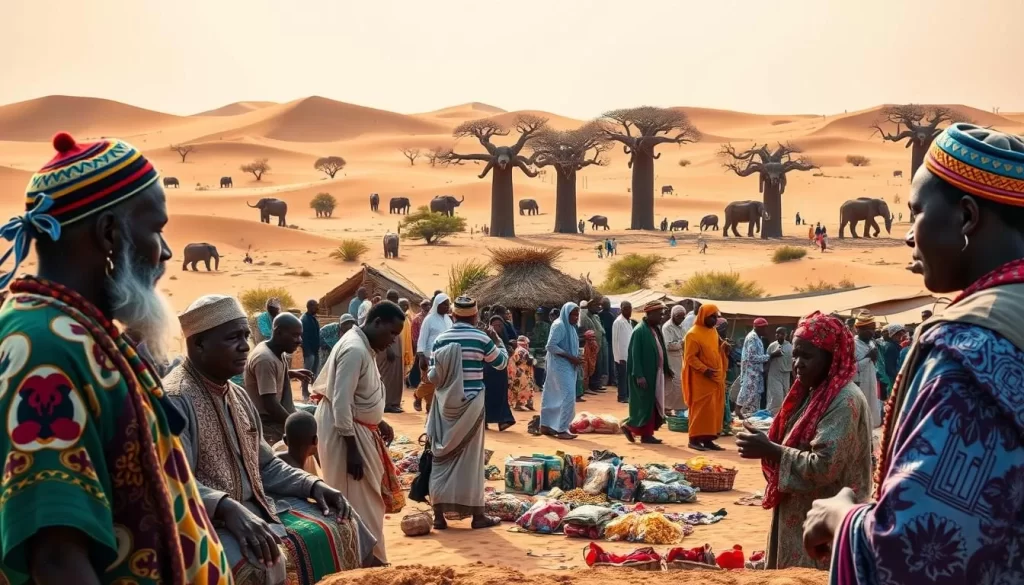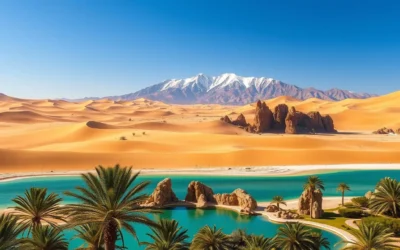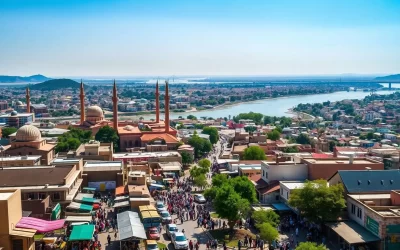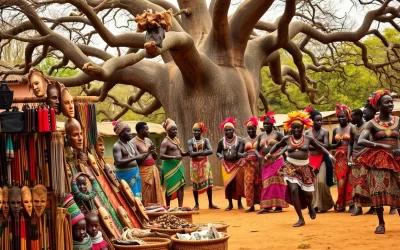✓ Accommodations✓ Flights✓ Rental Cars
Have you ever wondered about the language landscape of Niger? This vibrant country is home to a fascinating mix of cultures and tongues. French serves as the official language, a legacy of its colonial past, and is widely used in governance and education.
Beyond French, Niger boasts over 20 indigenous languages spoken by its diverse population. Hausa, for instance, is the most common, with over 55% of people using it daily. Other prominent tongues include Tamasheq, Kanuri, and Songhai, each reflecting the rich cultural heritage of the region.
Exploring these languages offers a glimpse into Niger’s identity and traditions. Whether you’re curious about the speakers of Hausa or the role of French in urban areas, this journey through Niger’s linguistic tapestry promises to be enlightening.
Overview of Niger’s Linguistic Heritage
The evolution of dialects here tells a story of trade, tradition, and transformation. Over centuries, this country has seen its language landscape shaped by a mix of indigenous cultures and external influences. From the trans-Saharan trade routes to colonial rule, each era left its mark on the way people communicate today.

Historical Influences on Niger’s Language Landscape
Trade routes played a significant role in shaping the dialects of this region. The Hausa kingdom, for example, became a hub for commerce, spreading its language across vast areas. Colonial rule introduced French, which remains a key medium in governance and education. These historical layers have created a unique blend of traditional and modern tongues.
Regional Diversity and Indigenous Languages
Different groups have contributed to the linguistic richness of this region. Hausa is the most widely spoken, used by over 55% of the population. Other tongues like Tamasheq and Kanuri reflect the cultural diversity of specific areas. This variety highlights how geography and history intertwine to shape communication.
Niger: Official and widely spoken languages
Understanding the linguistic dynamics of this region reveals a blend of tradition and modernity. French, the official language, plays a central role in governance, education, and media. It’s a legacy of colonial times, yet it continues to shape the way people communicate today.

The Role of French as the Official Language
French remains the backbone of administration and education. About 20% of the population is literate in French, with this number rising to 47% in urban areas. It’s the primary medium for legal systems, government documents, and formal communication. This ensures a unified framework across diverse groups.
Despite its prominence, French coexists with indigenous tongues. This duality reflects the region’s ability to balance modernity with cultural heritage. For instance, while French dominates official settings, local language spoken in daily life varies widely.
National Languages and Their Dialect Variations
Beyond French, the region boasts a rich tapestry of national languages. Hausa is the most widely used, with over 55% of the population speaking it. Other prominent tongues include Tamasheq, Kanuri, and Songhai, each with its own dialect variations.
For example, Hausa has dialects like Kurhwayanci and Daragaram, while Tamasheq includes variations such as Gofat. These differences highlight the cultural diversity within each speaker community. They also show how geography and history shape communication.
This linguistic diversity isn’t just about words. It’s a reflection of identity, tradition, and the unique ways people connect. Whether in urban centers or rural areas, the interplay of French and indigenous tongues creates a vibrant language landscape.
Cultural Significance and Contemporary Language Use
Language shapes identity, and in this region, it’s a vibrant reflection of culture. From daily conversations to cultural events, the way people communicate tells a story of heritage and modernity. This section explores how language remains a dynamic element of cultural identity, diving into demographics, education, and tradition.

Linguistic Demographics and Population Insights
Understanding the linguistic landscape starts with demographics. Hausa is the most widely spoken language, used by over 53% of the population. Other groups, like the Zarma-Songhai and Fulani, contribute to the diversity, each bringing their unique dialects. This mix highlights the cultural richness of the country.
Urban areas, like the capital, often see a blend of French and indigenous tongues. In rural communities, traditional languages dominate daily life. This regional distribution shows how geography influences communication.
Impact of Education and Literacy on Language Adoption
Education plays a key role in shaping language use. French, the official language, is taught in schools, with literacy rates higher in urban areas. However, many still prefer their native tongues for everyday conversations. This duality reflects the balance between modernity and tradition.
For example, while French dominates formal settings, local languages thrive in cultural events and media. This interplay ensures that both modern and traditional forms of communication coexist.
Language as a Marker of Identity and Tradition
Language isn’t just a tool for communication; it’s a symbol of heritage. For many, speaking their native tongue connects them to their roots. Cultural events, like festivals, often feature traditional songs and stories, preserving these dialects for future generations.
As one elder shared,
“Our language is our identity. It’s how we pass down stories and values.”
This sentiment underscores the deep cultural significance oflanguagein thisregion.
To learn more about the linguistic diversity of this area, explore Nigeria’s linguistic landscape or delve into the Niger-Congo language family.
Conclusion
Exploring the language landscape of this country reveals a vibrant mix of tradition and modernity. French, as the official language, plays a key role in governance and education, while indigenous tongues like Hausa, Tamasheq, and Kanuri reflect the cultural richness of the region.
Each group contributes unique dialects, shaping the way people communicate. From urban centers to rural areas, the interplay of French and local languages highlights the balance between heritage and progress.
Understanding this dynamic helps you appreciate the deep connection between language, culture, and identity. Whether in daily conversations or formal settings, the words spoken here tell a story of resilience and diversity.
To learn more about the broader linguistic context, explore the Niger-Congo language family or delve into the cultural diversity of this region.
The above is subject to change.
Check back often to TRAVEL.COM for the latest travel tips and deals.






